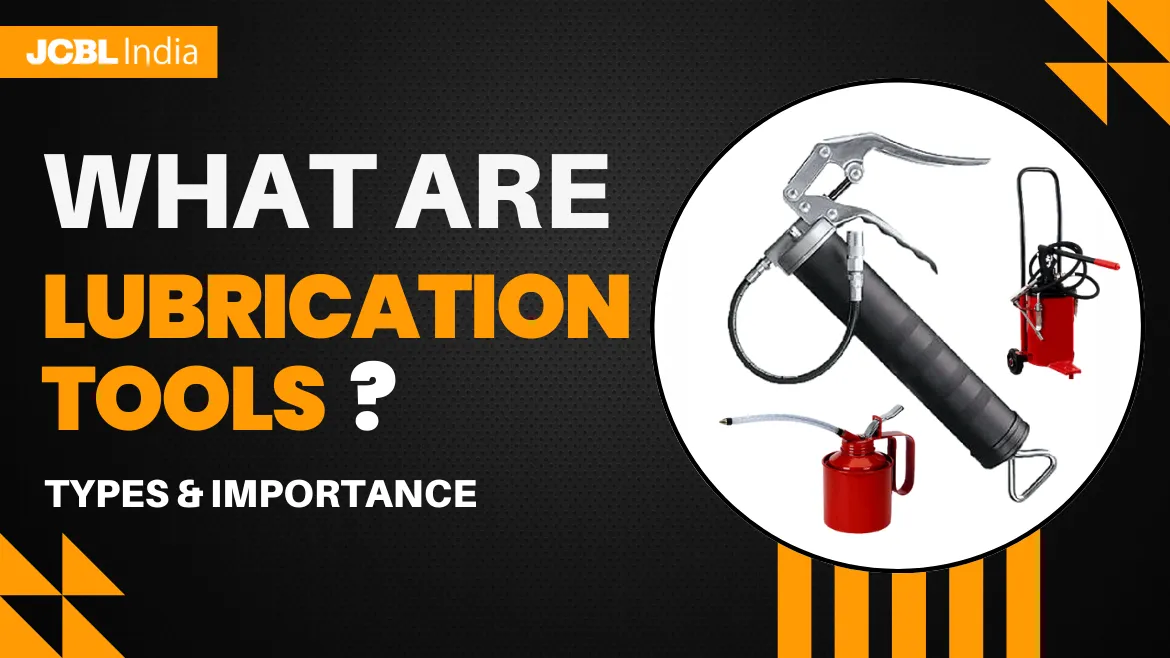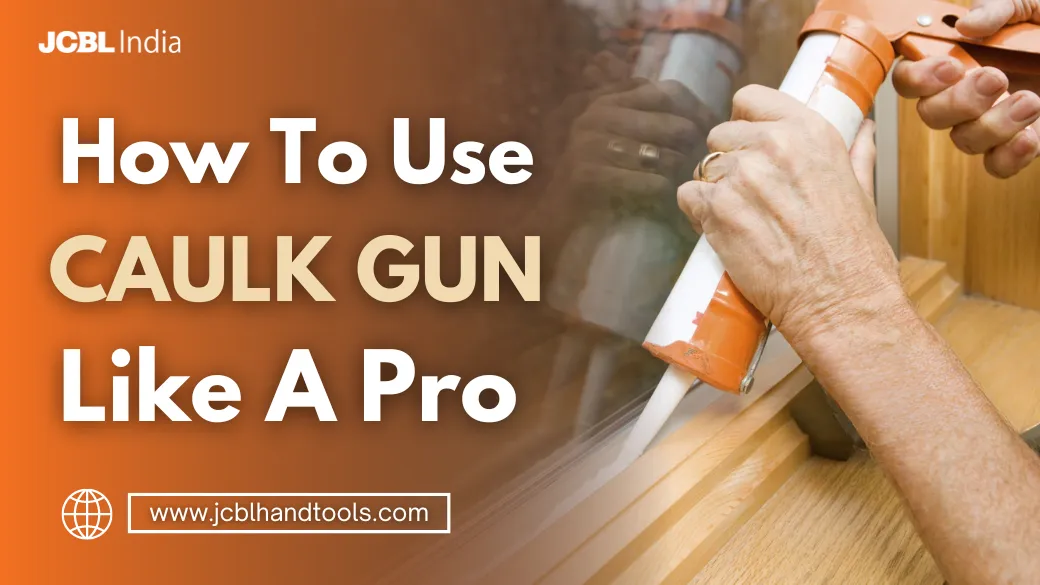Lubrication Tools – Types, Importance, and Selection Guide

While hand tools might seem simple and low maintenance, they still require regular care and maintenance to prevent wear and tear. Proper lubrication of hand tools is important for maintaining their longevity, efficiency, and performance. It reduces friction between the moving parts, further preventing corrosion, wear, and tear of the tools. The lubrication tools come into the picture to properly lubricate the hand tools. How do you lubricate your hand tools and machinery? Which lubrication tool do you use?
In this blog, we will explore different types of lubrication tools, the importance of lubrication, and the right ways to lubricate. This blog will guide you in selecting the right lubrication tool for your needs.
What Are Lubrication Tools?
Lubrication tools are specialized systems or devices that are designed to store, handle, and apply lubricants to the machinery. There are different types of lubricants including oil, grease, and other fluids. The lubricants create a thin layer reducing metal-to-metal contact between the moving parts. The lubrication tools make this task easier and allow one to apply lubricant with precision. From DIY enthusiasts to professionals, lubrication tools are a must to have. These are specially designed to supply accurate amounts of oil or grease to even the hardest-to-reach area. This further ensures the smooth functioning of the tools and machinery without any interruption.
Components Of Lubricant Tools
In the lubricant tool, several components work together to ensure a proper supply of lubricant to the tool or machinery. The basic components of a lubricant tool or system include-
Pump mechanism: Creates pressure to distribute lubricant through pipes and valves.
Reservoir: Stores the lubricant.
Pressure gauge or Control Valve: Present in advanced tools that monitor and adjust pressure.
Trigger or lever: Operates the pump to release lubricant.
Piston or plunger: Pushes the lubricant out of the tool.
Coupler or connector: Coupler ensures secure attachment to the equipment.
The placement of these components may vary in the lubrication tools depending on their type. Also, there can be additional components in the tools for additional features.
Types of Lubrication Tools
There are numerous types of lubrication tools available in the market for different types of jobs. Let’s discuss about the most common types of lubrication tools and their roles-
Grease Gun
A grease gun is the most common type of lubrication tool. Its design allows one to apply grease to a specific point on the machine or tool. It comes in different types like push type, pistol type, manual, air-powered, and battery-powered. These are popular for precise lubrication even under pressure through a nozzle or hose-to-zerk fittings. They have applications for greasing joints, bearings, steering components, and heavy machinery and industrial equipment.
Caulking Gun
A caulking gun is mainly used to apply viscous materials like sealants, caulk, or other adhesives. But, it can also be used for thick lubricants like heavy-duty grease. It comprises a frame to hold a tube or cartridge of lubricant and has a trigger mechanism to control the flow. This allows to ensure even flow of lubricant even on the hard-to-reach surfaces. This lubrication tool is suitable for applications where the lubricating parts require thick and adhesive grease or sealant-like lubricants. This is also used in automotive repairs and large home equipment.
Oil Can
Oil cans are designed for applications where small amounts of lubricant with great precision are required. They come in different varieties including Wesco, pistol, and perfetto type. Each of them has specific design and use cases.
- Wesco oil can is the traditional type of lubricant tool. This is made with metal with a long, flexible spout and thumb-operated pump. These are specifically used for lubricating small machinery and tools. Common application areas of Wesco oil include sewing machines, bicycles, and small motors.
- Pistol-type oil cans are operated with a pistol grip. This allows one to have better control over the supply of oil. These are feasible for the machinery where quick and precise oiling is required with limited accessibility.
- Perfetto-type oil cans have a pump-action mechanism. This makes it suitable for high-pressure oil applications. in such oil cans, the spout is longer and rigid which makes it ideal for hard-to-reach areas.
Suction Gun
A suction gun is a lubrication tool that is used to fill or remove non-corrosive liquids in vehicles and machinery. It is popular because it is a faster and cleaner method for oil filling and removal. Common applications of suction guns include the transmission of oil in gear cases, crank cases, and other applications.
Bucket Grease Pump
Bucket grease pumps are specially designed for greasing applications that require a large volume of lubrication. This lubrication tool is perfect for quick and effortless greasing in everyday use. It has a removable handle and a lever-operated pump. It has applications for excavators, earth-moving equipment, agricultural equipment, and automotive applications.
Rotary Barrel Pump
A rotary barrel pump is used to transfer non-corrosive petroleum-based fluids of light to medium viscosity from one container to another. These are also called drum pumps. To fulfill the industry-specific requirements, these are also available in different models, lengths, and accessories. Barrel pumps come with handles, plungers, and levers to dispense the fluid.
Why Lubrication Of Tools And Machinery Is Important?
Lubrication of tools is essential for several reasons:
- Reduces friction between two surfaces which further reduces wear and tear.
- Allows the equipment to keep operating without overheating.
- Protects against rust and corrosion.
- Reduces noise and vibration of moving parts in tools and machinery.
- Improves efficiency, performance, and safety of tools and machinery.
Best Practices for Tool Lubrication
Lubricating the tool or machinery is an important part of their maintenance, but, implementing it correctly is as important. The improper application of lubricant or over-lubrication can also cause problems. Thus, it is essential to adopt best practices for proper lubrication. Here are a few tips that you can consider while lubricating the tools-
Clean before lubricating
Make sure to clean the equipment before applying the lubricant. Any dirt, debris, or grime on the tool can make the lubricant less effective. This can further lead to build-ups causing rust and corrosion. To avoid this, wipe out the tool or machinery with clothes to clean it before applying lubricant.
Keep a check on the lubricant
Regularly analyzing the lubricant is also important so you don’t end up using expired ones. This can reduce the effect of lubricant.
Keep the lubricant tool or dispenser clean
The tools that you are using for dispensing lubricant should be clean. Dirt and debris in the dispenser can contaminate the lubricant further reducing the life of equipment. using a clean dispenser can prevent cross-contamination.
Make sure to use the right lubricating tool
Based on the application area and your needs, choose the right lubricating tool. The uses of lubricating tools vary based on your needs. For example, hand tools like pliers and wrenches require simple oiling, thus there is no need to use complex tools. On the other hand, tools with moving parts like adjustable spanners and ratchets can be lubricated using a grease gun.
Record observations
Keep track of the lubrication program to improve the performance and efficiency of the tool. This can prevent over-lubrication and under-lubrication of the tool or machine.
How To Choose The Right Lubrication Tool For The Job
With a variety of tools available in the market, selecting the right one can be confusing. However, choosing the right one is important to correctly lubricate the tool or machinery. Here is the guide to help you in making the right decision-
| Lubrication Tool | Best For | Applications | How to Choose |
| Grease Gun | High-pressure grease application | Bearings, joints, steering mechanisms, automotive repairs, industrial machinery |
|
| Caulking Gun | Applying thicker lubricants or sealants | Automotive repair, home maintenance, sealing and lubricating hard-to-reach areas |
|
| Oil Can | Precise oil dispensing | Sewing machines, bicycles, small motors, intricate machinery |
|
| Suction Gun | Fluid removal or addition | Gearboxes, crankcases, hydraulic systems, transferring oil or other fluids |
|
| Bucket Grease Pump | High-volume grease application | Heavy machinery, agricultural tools, industrial plants |
|
| Rotary Barrel Pump | Fluid transfer from large containers (drums/barrels) | Transferring oil, petroleum products, or lubricants in industrial settings |
|
Conclusion
In conclusion, lubrication is important to improve the efficiency and performance of the tools and machinery. By using the right lubrication tool, you can ensure the smooth functioning of your equipment. through regular lubrication routines and adopting the aforementioned best practices, you can extend the life of your tools. A lubrication tool is not an accessory but a maintenance partner that you must have.
Are you looking for lubrication tools? Your search is over. At JCBL Hand Tools, we manufacture and supply a variety of lubrication tools and hand tools to your needs. Visit our website to check out the products.
FAQ’s
How often should I lubricate my tools?
The frequency of lubrication of the tool depends on how often you use the tool. Also, the tools that are used and stored in dusty environments require often lubrication. It is recommended to lubricate your tool once per month.
What is the best lubricant for hand tools?
For simple hand tools, you can simply use the machine oil. But, tools with complex or more moving parts need to be lubricated using grease.
What happens if I don’t lubricate my tools?
Due to a lack of lubrication, the tool might easily wear down. Also, the probability or rust and corrosion increases, further causing tool failure.




